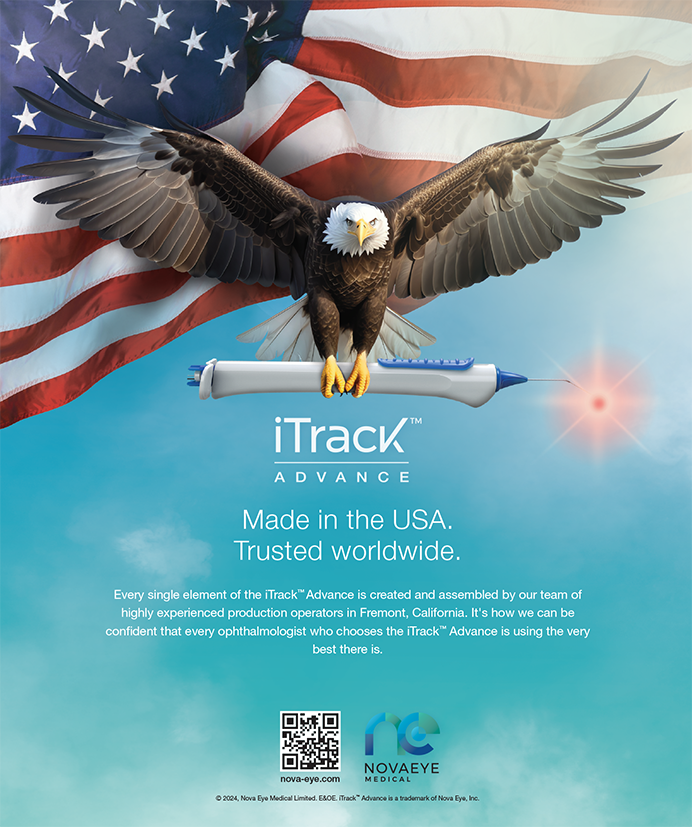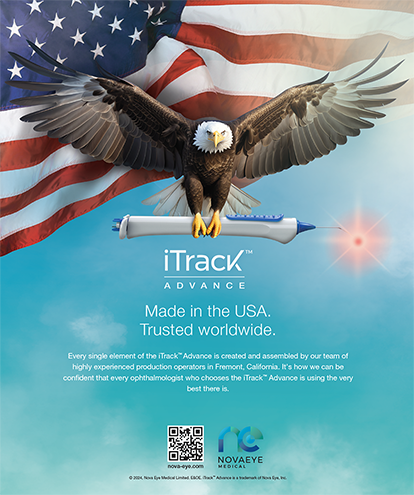
Welcome to another edition of “Ophthalmology 360.” This is a column put together by the members of CEDARS (Cornea, External Disease, and Refractive Surgery Society) and ASPENS (American Society of Progressive Enterprising Surgeons). Although we continue to hear about the latest technology regarding IOLs and instrumentation, we do not often hear about the latest updates in viscoelastics. There are many varieties of viscoelastics now available, and each has unique properties. This month, Cynthia Matossian, MD, discusses her viscoelastic preferences for cataract surgery as well as her technique for using and removing viscoelastics. These subtle nuances can simplify surgery and improve outcomes. We hope you enjoy this discussion.
—Kenneth A. Beckman, MD, section editor

Ophthalmic viscosurgical devices (OVDs) maintain a deep anterior chamber to facilitate manipulation inside the eye while protecting the delicate corneal endothelium and other ocular tissues during surgical procedures. If left in the eye, the use of an OVD, may produce a spike in IOP. The key to minimizing this problem is the complete removal of the OVD.
OVDs IN ACTION
In every cataract surgery I perform, I use a viscoadaptive OVD (Healon5; Abbott Medical Optics [AMO]) at the beginning of the procedure and a cohesive OVD (Healon; AMO) during bag inflation and IOL insertion. I prefer the convenience of the Healon Duet Dual Pack (AMO). DuoVisc (Alcon) is an OVD system that contains Viscoat and ProVisc (both from Alcon), which provides the surgeon with a two-OVD option. An OVD with viscoadaptive properties and a high molecular weight behaves as both a cohesive and a dispersive agent, helping to protect the corneal endothelium, manipulate the iris, temporarily enlarge the pupillary diameter, create working space, and flatten the convex surface of the cataract. A cohesive OVD offers space creation, protects endothelial cells, and expands the posterior chamber for easy maneuvering and easier IOL implantation.1
I use a soft-shell technique at the start of all of my cataract cases. After making a sideport incision, I instill the viscoadaptive OVD to flatten the convex dome of the cataract and then add a thin layer of balanced salt solution under the OVD, directly on top of the anterior capsular surface. The risk that the continuous curvilinear capsulorhexis (CCC) spirals out to the equator increases if the tear is performed on the slope of the convex cataract. The use of a viscoadaptive OVD flattens the lens curvature, thus facilitating the creation of the CCC.2
To inflate the bag, I inject a cohesive OVD and then insert the IOL. The majority of my patients receive a one-piece acrylic IOL; the lower molecular weight of the cohesive OVD (compared to the viscoadaptive OVD) reduces the resistance placed on the haptics as they unfold, allowing for faster opening.
REMOVAL
Surgeons have their preferred techniques for OVD removal. With better microscopes that provide greater illumination and enhanced visibility, it is rare for ophthalmologists to leave much OVD in the eye at the end of the case.
Many factors influence a surgeon’s OVD removal techniques, including whether he or she is using a coaxial I/A system or a bimanual I/A tip where irrigation is separated from aspiration. The key is to get all of the OVD out of the eye without damaging the capsule or the IOL.
For OVD removal, I use the Rock’n’Roll and the two-compartment (or behind-the-lens) removal techniques. For the Rock’n’Roll approach, I position the I/A tip with the port facing away from the posterior capsule, angle the optic up on one side, and get under that optic to remove the OVD. I then rock the optic down on that side and raise it on the contralateral side to get under that segment of the optic to remove the residual OVD. By moving the I/A tip back and forth, I evacuate the compartmentalized segments of the OVD. Then, I dial the implant, usually 360º clockwise, to make sure all of the OVD is out of the bag. The haptics act as a sweeper to loosen the OVD trapped in the equator of the capsular bag.
Other techniques I use to remove the OVD from the eye include tapping on top of the optic to disperse the viscoelastic trapped under the IOL as well as spinning the IOL to push out the OVD. Many inventive techniques can be used to remove OVDs from the bag. The key is to get all of the OVD out before sealing the incision.
1. Hütz WW, Eckhardt HB, Kohnen T. Comparison of viscoelastic substances used in phacoemulsification. J Cataract Refract Surg. 1996;22(11):955-959.
2. Holmen J JB, Lundgren B. Scheimpflug photography study of ophthalmic viscosurgical devices during simulated cataract surgery. J Cataract Refract Surg. 2003;29(3):568-574.
Section Editor Kenneth A. Beckman, MD
• director of corneal services at Comprehensive EyeCare of Central Ohio in Westerville, Ohio
• clinical assistant professor of ophthalmology at The Ohio State University in Columbus and president of CEDARS
• (614) 890-5692; kenbeckman22@aol.com; Twitter @KenBeckmanMD
Cynthia Matossian, MD
• founder and CEO of Matossian Eye Associates, with offices in Pennsylvania and New Jersey
• clinical instructor/adjunct faculty member, Temple University School of Medicine in Philadelphia and Robert Wood Johnson Medical School in New Brunswick, New Jersey
• cmatossian@matossianeye.com
• financial disclosure: consultant to AMO



